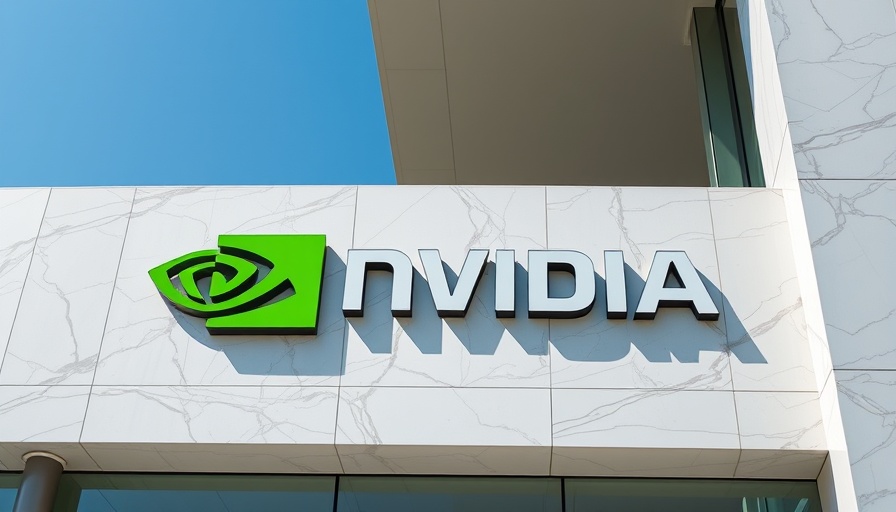
The AI Boom: Nvidia's Surging Sales and Their Few Key Players
Nvidia, the chipmaker that has become synonymous with artificial intelligence, recently revealed that a staggering 39% of its second-quarter revenue came from just two customers. This revelation, highlighted in a securities filing, illustrates not only the company's monumental earnings but also its reliance on a small number of clients. With quarterly revenue soaring to a record $46.7 billion—an impressive 55% increase—understanding the dynamics behind such growth is crucial for businesses that aim to scale in the tech landscape.
Understanding Customer Concentration Risks
The nature of customer concentration can be a double-edged sword in business. While it can drive fast revenue growth, it also raises flags for dependency risks. In Nvidia's case, one customer accounted for 23% of sales, while another made up 16%. This dependency can create vulnerabilities; should either customer reduce their orders or shift to a competitor, Nvidia's revenue could feel the sting. For business owners, exploring strategies to diversify your client base could be invaluable, mitigating risk while fostering sustainable growth.
What This Means for AI Adoption
The boom in Nvidia's sales is closely tied to the increasing enterprise adoption of AI technologies. According to recent data, 90% of CFOs have reported a positive return on investment from generative AI—up from just 26.7% earlier this year. This marked shift underscores a growing trend: businesses across industries are recognizing the imperative of leveraging AI for efficient operations and better decision-making capabilities. For business owners generating between $2M and $10M in revenue, this could signal an opportunity not just to invest in AI but to rethink operational strategies fueled by AI insights.
Diversifying Revenue Streams: Strategies for Business Growth
In a world where companies like Nvidia showcase massive gains through key partnerships, how can smaller businesses ensure they are ready for the future? One approach is to explore diverse revenue streams within existing operations. For instance, if you're in the fintech space, why not investigate ways to incorporate machine learning into your customer service strategies? Or if your tech firm focuses on digital currency, consider offering advisory services in addition to your core offerings. The aim is to broaden your scope while reducing reliance on a limited set of clients.
The Broader Economic Landscape for AI and Technology
The success of Nvidia serves as a bellwether for the broader tech landscape. Industries from chip manufacturing to digital currency are witnessing revenue increases driven by a surge in AI applications. As more companies recognize AI as a central pillar for growth, navigating these trends becomes crucial. For business owners, understanding where the market is headed can open doors to funding opportunities, strategic partnerships, and innovative use cases that not only enhance revenue but also build resilience against market fluctuations.
If you are looking to navigate these changes and harness the power of AI for your business, now is the perfect time to leverage these insights. Consider how you can innovate your operational infrastructure and connect with partners who empower your growth. Embrace the AI revolution and position your business for success!
 Add Row
Add Row  Add
Add 



Write A Comment